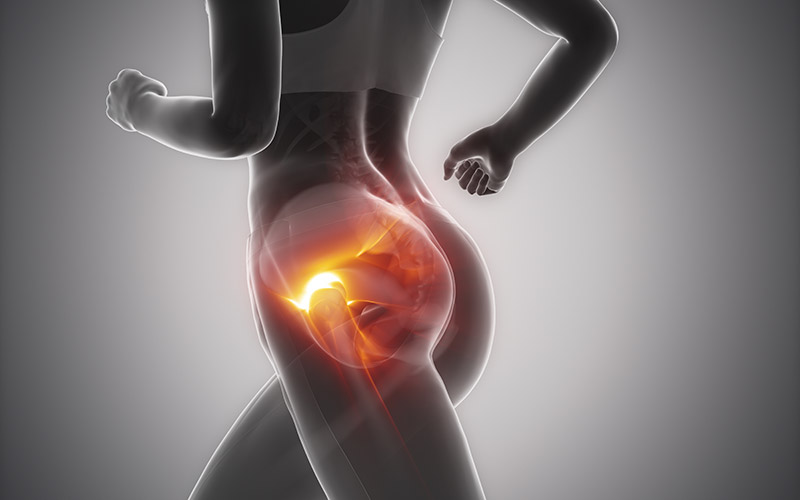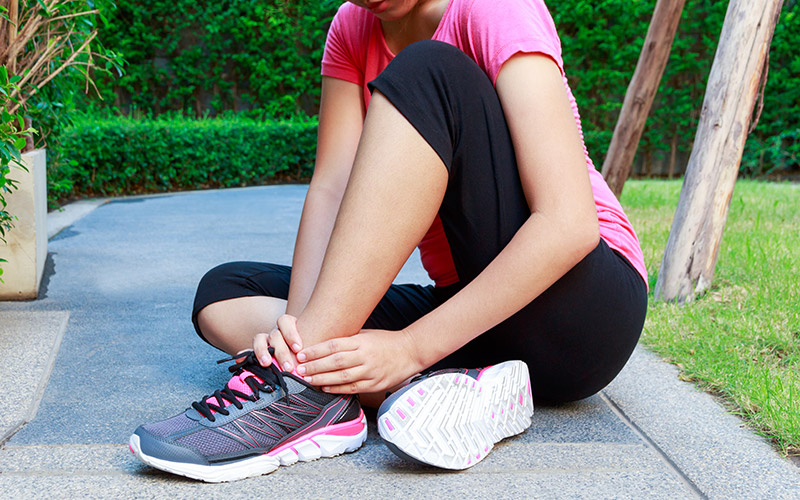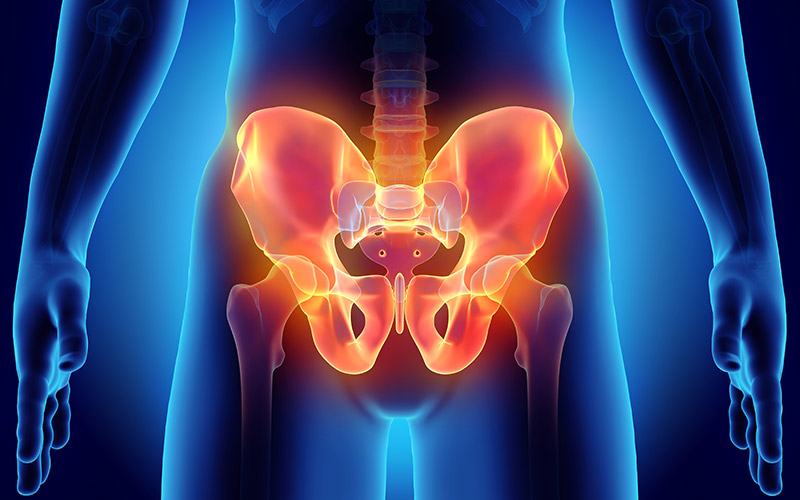Written by Chelsea on April 24, 2019 |

Hip pain is one of the more frequent complaints as people age, and many times it may be attributed to bursitis in the hip. Bursae are fluid-filled sacs that helps provide cushion between bone and soft tissue, and they can be found all over the body. When a bursa gets irritated or inflamed, it is referred to as bursitis. On the outside of the hip/upper thigh, there is a large bony point called the greater trochanter, and the trochanteric bursa is one of the more commonly affected areas where bursitis can occur (often referred to as trochanteric bursitis). Trochanteric bursitis can occur for a variety of reasons, including direct injury to the area, prior hip surgery, biomechanical factors like leg length differences or gait abnormalities, and overuse from repetitive activities like running, cycling, stair climbing, etc. Symptoms may include pain on the outer part of the hip that may or may not refer down the outside of the thigh or buttock, pain when lying on the affected side, pain getting in/out of the car or a deep chair, and pain with repetitive activities like walking, running, biking.
Conservative treatments like rest from overuse, ice, and NSAIDS may be effective to reduce inflammation and pain from trochanteric bursitis. Your doctor may also decide an injection may be beneficial to help relieve symptoms. Physical therapy can be very useful in helping reduce symptoms and prevent future exacerbations of pain as well. Exercises and manual interventions in physical therapy will aim to improve flexibility and mobility in surrounding areas that are tight, as well as improve strength in muscles that are weak, to improve the stabilization of the core, hips, and legs. Balance and proprioceptive exercises may also be given to help improve pelvic stability to aide with returning to your prior level of function.
If you have questions or would like more information on trochanteric bursitis, please contact us at ProActive Physical Therapy and Sports Medicine.
Reference:
Foran, Jared R.H. Hip Bursitis. https://orthoinfo.aaos.org . Reviewed September 2018. Accessed January 27, 2019.
Written by Chelsea on April 10, 2019 |

One of the most common dysfunctions to occur in the ankle/foot amongst both athletes and non-athletes is called posterior tibial tendonitis. The tibialis posterior is a muscle that starts from the back of the tibia (or shin bone). The tendon then runs down the inside of the leg and ankle, attaching on the inside of the foot near your arch. This tendon plays a crucial role in providing stability to the foot/ankle and supporting the arch of the foot with weight-bearing activities. Injury to the posterior tibial tendon can occur from trauma, like a fall. However, very commonly, overuse injuries occur from repetitive activities like walking, running, and jumping, causing pain and inflammation in the tendon. Classic symptoms of posterior tibial tendonitis include pain along the medial aspect of the ankle/foot, swelling, decreased range of motion, and sometimes instability in the foot/ankle. Because of the vital role the posterior tibial tendon plays in providing arch support, as the tendonitis progresses, the arch in the foot may flatten, changing the position of your foot and causing stress and strain in other areas of your ankle and foot as well.
Depending on the severity of dysfunction to the tendon, conservative treatment can be very successful in decreasing symptoms of posterior tibial tendonitis. This may include a regiment of rest, ice, compression, and possibly NSAIDS. Physical therapy can also be very beneficial to help improve range of motion, flexibility, and stability in the foot/ankle. Exercises to help stabilize the core and hip/pelvis may also be useful to improve overall mechanics of foot and ankle and prevent future injuries. In addition, orthotics may help to provide better arch support to decrease symptoms and prevent future injury as well.
If you have any questions about posterior tibial tendonitis or would like additional information, please contact us at ProActive Physical Therapy and Sports Medicine.
Reference
Weatherford, Brian M. Posterior Tibial Tendon Dysfunction. http://orthoinfo.aaos.org. Reviewed September 2017. Accessed January 26, 2019.
Written by Reyna Bucknell on April 4, 2019 |

We often think that urine leakage is a normal part of aging. However, we have muscles in our pelvis called the pelvic floor muscles that are responsible for controlling this function and preventing urine from coming out at inappropriate times. Just like you would exercise your legs to keep walking and your arms to be able to carry your groceries, you should be exercising your pelvic floor muscles to stay in control of your bladder.
Continue Reading »




